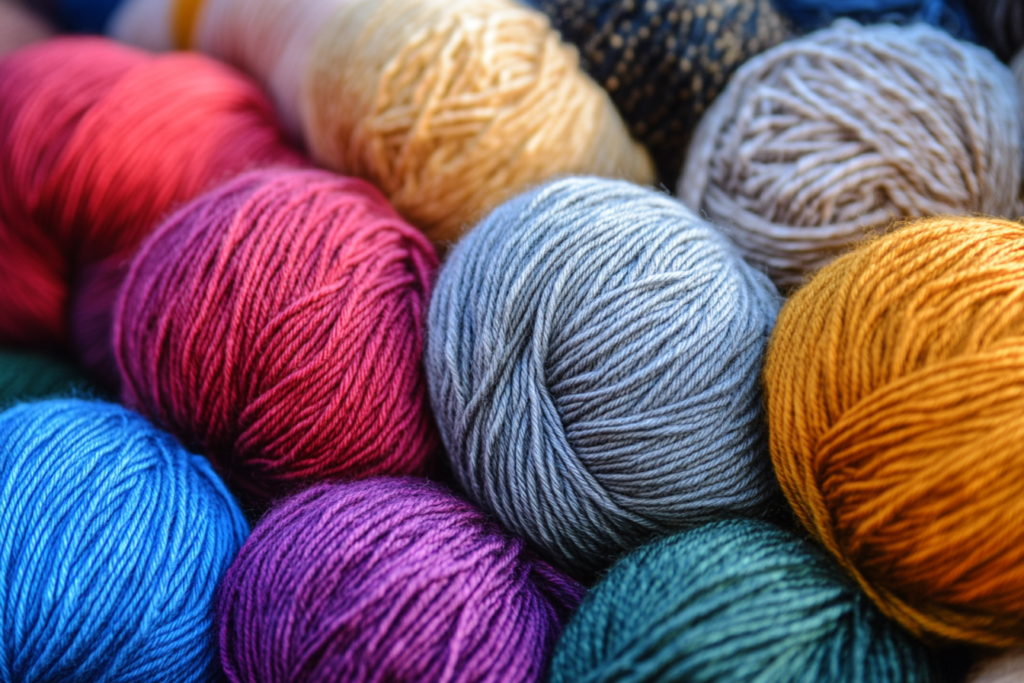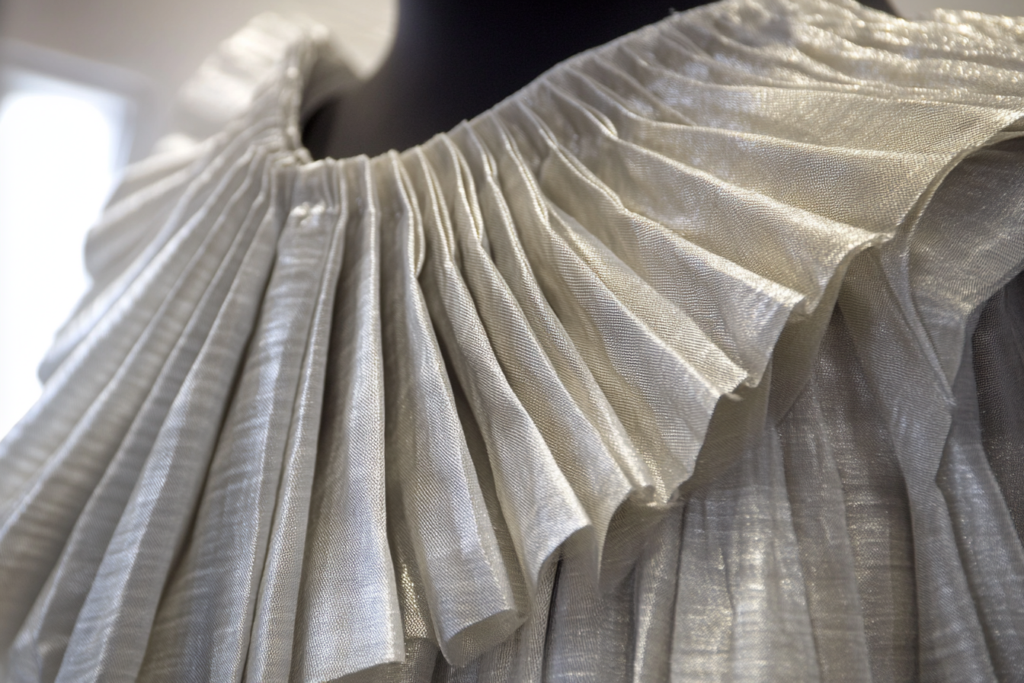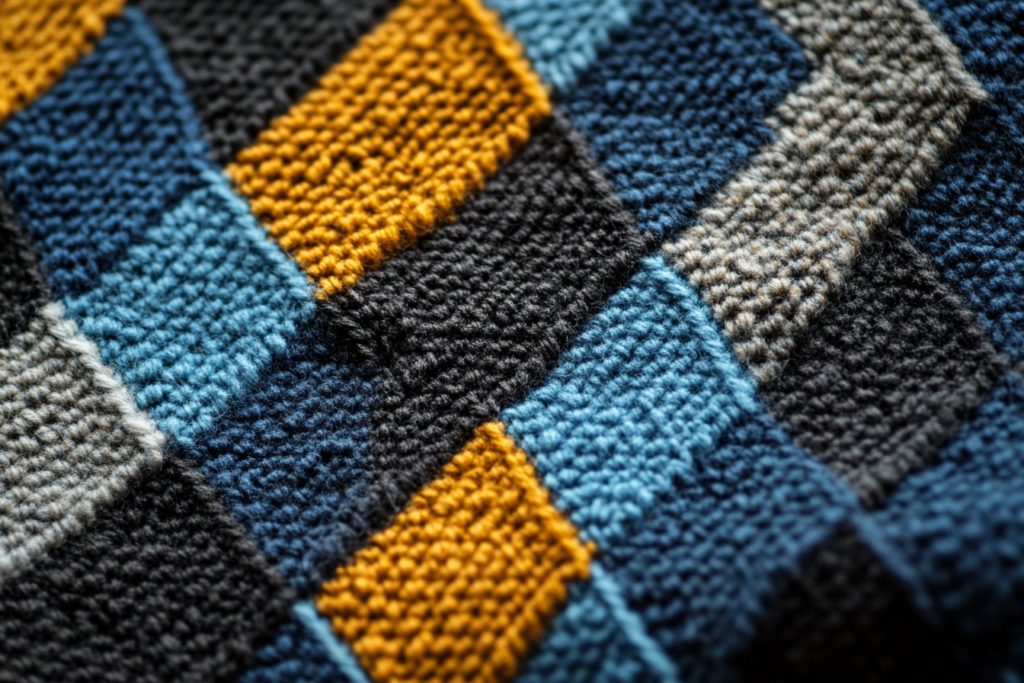Woolen Yarns: The Soft and Warm Fiber for Knitting and Textiles
Meta Description: Woolen yarns are carded rather than combed, made from woolen staples. These yarns are perfect for knitting sweaters, providing softness and warmth. Learn about their characteristics and uses in textiles.
What are Woolen Yarns?
Woolen yarns are yarns made from wool fibers that are carded rather than combed. This difference in processing results in a yarn with a softer, looser texture, and greater warmth compared to other types of yarn, such as worsted yarns. The fibers used to create woolen yarns are typically woolen staples, which are shorter, finer fibers that are ideal for creating a yarn with a more fluffy and spongy feel.
Woolen yarns are highly prized in the knitting and textile industries, especially for products that require softness and insulation, such as sweaters, scarves, hats, and blankets. These yarns have unique characteristics that make them suitable for creating cozy, warm, and comfortable garments and textiles.


How Woolen Yarns Are Made
📌 Carding Process
- The main difference between woolen yarns and worsted yarns lies in the carding process. In carding, the wool fibers are pulled apart and arranged in a random, intertwined pattern, which gives woolen yarns their characteristic softness and loft. This process results in yarn that is more bulky and textured.
📌 Fiber Length
- Woolen yarns are made from woolen staples, which are shorter and finer fibers compared to the longer, smoother fibers used in worsted yarns. The shorter fibers are more difficult to spin, but they result in yarn that is softer and more flexible.
📌 Spinning Woolen Yarns
- After carding, the wool fibers are spun into yarn. During the spinning process, the yarn is twisted in a way that allows for more air and space between the fibers. This airiness contributes to the insulating properties of woolen yarns, helping to keep garments made from this yarn warm.
Characteristics of Woolen Yarns
📌 Softness
- Woolen yarns are known for their soft texture, which is a result of the carding process. The fibers are not smoothed out as they are in worsted yarns, making woolen yarns feel plush and gentle against the skin.
📌 Warmth
- The loose structure of woolen yarns creates tiny pockets of air between the fibers, which helps trap body heat and provide excellent insulation. This makes woolen yarns ideal for creating warm garments, especially for cold weather.
📌 Elasticity
- Wool fibers naturally have elasticity, which means they can stretch and return to their original shape. This characteristic is enhanced in woolen yarns, giving them the ability to retain their shape even after repeated wear.
📌 Durability
- Despite being softer and fluffier than worsted yarns, woolen yarns are surprisingly durable. The fibers are able to withstand wear and tear, making them ideal for creating long-lasting garments and textiles.
📌 Textured Appearance
- Woolen yarns have a textured appearance due to the carding process, which results in uneven thickness and a fluffy look. This texture gives garments made from woolen yarns a more organic, natural aesthetic.
Uses of Woolen Yarns
📌 Sweaters and Knitwear
- Woolen yarns are commonly used for knitting sweaters, scarves, hats, and gloves. Their warmth, softness, and flexibility make them perfect for creating cozy winter clothing.
📌 Blankets and Throws
- Woolen yarns are often used for making blankets and throws, especially those designed for warmth. The insulating properties of wool make it an excellent choice for creating soft, warm bedding.
📌 Felting
- Woolen yarns are also used in the felting process, where the yarn is subjected to heat, moisture, and friction to create dense, non-woven fabrics. This technique is used for making craft items, felted clothing, and decorative pieces.
📌 Tweed and Other Fabrics
- Woolen yarns are commonly used in the production of tweed fabrics, which are often used for jackets, coats, and skirts. The bulk and texture of woolen yarns contribute to the characteristic look and feel of tweed fabrics.
Advantages of Woolen Yarns
📌 Natural Insulation
- Woolen yarns naturally trap heat, making them ideal for creating garments that need to keep the wearer warm. They are perfect for cold-weather apparel and accessories like sweaters, mittens, and hats.
📌 Breathability
- Despite being insulating, woolen yarns are also breathable, allowing moisture to be absorbed and released, which helps regulate body temperature. This makes woolen garments comfortable to wear in varying temperatures.
📌 Easy to Care For
- Woolen yarns are resilient and can withstand repeated wear without losing their shape or texture. Many woolen yarn garments are machine washable (depending on the fiber content and yarn treatment), making them easy to care for.
Illustration of Woolen Yarns
Below is an illustration showing the structure of woolen yarns, highlighting their soft, fluffy texture and the way they are spun from short wool fibers. This texture makes woolen yarns perfect for knitting sweaters, scarves, and other warm textiles.

Conclusion: The Comfort and Warmth of Woolen Yarns
Woolen yarns are the perfect choice for cozy, warm, and soft garments, making them ideal for creating winter clothing like sweaters, scarves, and gloves. Thanks to their insulating properties, elasticity, and durability, woolen yarns are versatile and reliable in textile production. Whether used for knitting or felting, woolen yarns provide comfort and quality in a variety of applications.



